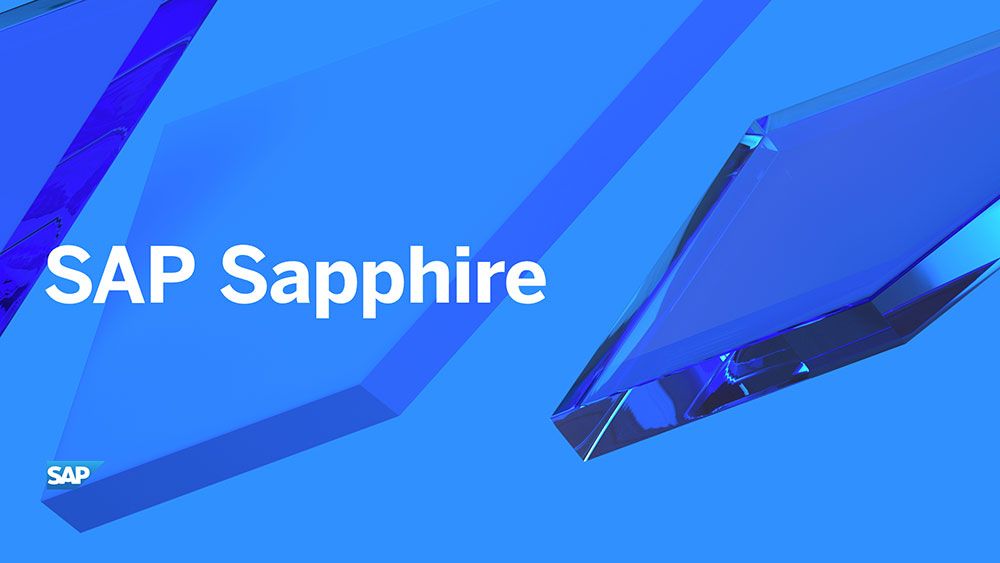How to Future-Proof Your Business in the Age of AI

Artificial intelligence (AI) has taken centre stage, demanding the attention of business owners and leaders worldwide. To stay ahead of the curve and ensure long-term success, it is essential to future-proof your operations in the era of AI.
AI's relentless progress has shattered the boundaries of imagination, forever altering how businesses function, connect with customers, and deliver remarkable products and services. From automation and predictive analytics to machine learning, natural language processing and, of course, generative AI, AI's impact is profound and far-reaching. Embracing this wave of change is no longer a luxury; it is a necessity to remain competitive and relevant in the ever-evolving market.
Yet, navigating the AI landscape and future-proofing your business presents unique challenges. It requires meticulous planning, a thirst for continuous learning, and a proactive mindset to harness the benefits while mitigating risks. I am here to guide you through this thrilling yet complex journey. Armed with the right tools, strategies, and forward-thinking organisational culture, you will confidently stride into the synthetic future.
Whether you are a fledgling startup or a seasoned industry titan, the principles and recommendations shared in this article will serve as your compass in navigating the dynamic landscape of AI. Prepare to optimise your business processes, unlock untapped growth potential, and embrace a future where innovation knows no bounds. The age of AI awaits – are you ready to seize the possibilities?
Understanding Disruptive Forces

Throughout history, various disruptive forces have shaped industries and transformed how businesses operate. From the invention of the steam engine during the Industrial Revolution to the advent of the information age with the rise of the internet, these transformative moments have left lasting impacts. We can learn important lessons from past disruptions that will help us prepare our companies for the AI era.
Adaptability and flexibility are important lessons to learn. Companies that successfully navigated previous disruptions embraced change and swiftly adapted their strategies to capitalise on emerging opportunities. For example, during the Industrial Revolution, businesses that transitioned from manual labour to harnessing the power of steam engines gained a significant competitive advantage. Similarly, in the information age, companies that embraced digital transformation and adapted their business models to the online landscape flourished. In a nutshell, the following characteristics help in future-proofing your business.
- Adaptability and flexibility are crucial in navigating disruptive forces and embracing change.
- Future-proofing businesses in the AI age requires a commitment to innovation, embracing technological advancements, and fostering a culture of learning and collaboration.
- Companies prioritising AI integration and relying on it for their operations have reported improved results and overall company growth.
- Learning from past disruptions, staying ahead of the curve, and embracing change and innovation are essential for businesses to thrive in the AI era.
Let's look at two examples of companies that have thrived in the past ~300 years and learn how they have embraced change:
- The Weiner Zeitung
- Sotheby's
1. Weiner Zeitung Thriving in the Digital Landscape
To demonstrate this, the Wiener Zeitung, an iconic Vienna-based newspaper, defied the test of time, surviving all industrial revolutions for an astounding 320 years in print. Its remarkable longevity and adaptability showcase its ability to navigate through centuries of societal and technological transformations, leaving a lasting imprint on the history of journalism. Wiener Zeitung's success can be attributed to several key factors that have helped it survive and thrive for 320 years:
Adaptability to Changing Times
The Wiener Zeitung demonstrated remarkable adaptability in response to societal and technological transformations. Throughout its long history, the newspaper embraced various printing technologies, from traditional letterpress to modern offset printing and digital production methods. This allowed it to keep up with industry standards and maintain its competitive edge.
Diversification of Content
In addition to publishing official government information, the Wiener Zeitung expanded its content to cover a wide range of topics, including politics, culture, science, and sports. As a result of diversifying its content, the newspaper attracted a broader readership and remained relevant to changing audience interests.
Embracing Digitalisation
Recognising the importance of digital media, the Wiener Zeitung successfully transitioned to online platforms. Recently, it launched a new website making its content easily accessible to a wider audience beyond print readers. This move allowed the newspaper to tap into new revenue streams and reach readers in an increasingly digital age.
Honesty and Integrity in Journalism
The Wiener Zeitung has maintained a reputation for independent and quality journalism throughout its long history. Its commitment to journalistic integrity and accurate, unbiased information has helped build trust with its readership, ensuring its continued relevance and support.
The enduring legacy of the Wiener Zeitung serves as a poignant reminder that, like this historical newspaper, modern organisations must embrace technology and adapt to the evolving landscape to endure and thrive over time.
2. Digital Transformation at Sotheby's
Recognising the need to stay ahead of the curve is also crucial. Disruptive forces can rapidly reshape industries, leaving businesses that fail to anticipate or respond adequately at a disadvantage. Companies that prioritise innovation and are early adopters of transformative technologies tend to outperform their peers.
Sotheby's, as one of the world's oldest and most esteemed auction houses, has managed to survive and thrive by adapting to the challenges posed by industrial revolutions and the digital era. With 279 years, it has a rich legacy and a strong reputation, and Sotheby's has built a trusted brand that has attracted collectors and art enthusiasts throughout its long history. This reputation has been a significant factor in its ability to endure and remain relevant.
Embracing Digital Advancements
Recognising the transformative power of technology, Sotheby's has embraced digital advancements proactively. It has harnessed the potential of online platforms and digital tools to broaden its reach and engage a global audience. Through user-friendly websites and mobile applications, Sotheby's has made it possible for people around the world to participate in auctions, explore collections, and make purchases remotely.
The introduction of online bidding has been a pivotal development for Sotheby's. It has opened doors for individuals who may not have had the opportunity to physically attend auctions, expanding the potential buyer base and attracting new collectors. This digital accessibility has been complemented by virtual auctions, where participants can engage in bidding and purchasing activities entirely online. Also, Sotheby's has embraced hybrid auction formats that blend in-person bidding with online participation. This flexibility allows bidders to choose how they engage with the auction, either attending in person or participating remotely through online bidding platforms. Such adaptability has catered to the preferences and convenience of a wide range of buyers.
Strategic Partnerships
Sotheby's has also formed strategic partnerships and collaborations with digital platforms and technology companies. The company has tapped into new markets by leveraging e-commerce platforms—such as eBay —and attracted a broader range of clients. Integrating art and collectibles into the digital marketplace has facilitated greater accessibility and exposure.
More recently, Sotheby's has explored innovative technologies like virtual reality (VR) and augmented reality (AR) to enhance the viewing experience when buying real estate. Through these immersive technologies, clients can virtually tour houses, examine artworks, and attend exhibitions. VR and AR have added a new dimension to the traditional auction experience, captivating collectors and enhancing their engagement with art and real estate.
Sotheby's and NFTs
Last but not least, Sotheby's has also adopted the emerging technology of non-fungible tokens (NFTs) to adapt to the digital era. Sotheby's has recognised the potential of NFTs to revolutionise the art market by enabling artists to tokenise their digital creations and sell them directly to collectors. The auction house has hosted high-profile NFT sales, showcasing digital artworks, collectibles, and virtual assets. Sotheby's has not only demonstrated its willingness to embrace new forms of art by participating in the NFT space but also tapped into a growing market of digital art enthusiasts and collectors drawn to the unique qualities and blockchain-backed authenticity offered by NFTs.
In summary, Sotheby's success in surviving changing circumstances and adapting to the digital era can be attributed to its commitment to maintaining its legacy, embracing technological advancements, harnessing the power of digital platforms, exploring innovative technologies, forming strategic partnerships, and creating engaging experiences for its clients as part of their success over the years.
The Disruptive Power of AI
In the AI age, adaptability, flexibility, embracing change, and innovation will be paramount for future-proofing businesses. According to the latest CNBC|SurveyMonkey Workforce Survey, conducted from May 23-31, 2023, among nearly 9,000 workers in the U.S., workers who rely on AI for their jobs have a significantly higher Workforce Happiness Index of 78, compared to those who don't use AI at all, with a score of 71. As a result, the companies that have embraced AI and rely on it for their operations have reported improved results and overall company growth. Not surprising, but good to see this confirmed using research.
The Impact of AI on Employee Satisfaction and Business Growth
Businesses can position themselves to thrive in the AI age by learning from previous disruptions, appreciating the value of adaptability, welcoming change and innovation, and understanding the need to stay ahead of the curve. There are several important considerations:
- Embracing AI presents challenges and opportunities for businesses.
- Staying abreast of technological advancements and emerging AI applications is crucial to avoid missed opportunities and potential obsolescence.
- Adopting AI can lead to significant advantages, including automating repetitive tasks, driving innovation, making data-driven decisions, and enhancing customer satisfaction.
- Prioritising AI integration involves investing in research and development, fostering innovation, and forming partnerships with AI experts and technology providers.
Adapting to AI: Navigating Challenges and Leveraging Opportunities
AI is undeniably one of the most transformative forces of our time, poised to reshape industries and revolutionise business practices. Its ability to process vast amounts of data, make intelligent predictions, and automate tasks with precision presents both challenges and opportunities for businesses in the AI era.
The transformative power of AI lies in its capacity to augment human capabilities and drive efficiency. By utilising AI technologies, businesses can improve decision-making processes, streamline operations, and gain valuable insights from large, complex data sets.
However, embracing AI as a disruptive force requires navigating certain challenges. For instance, the ethical considerations surrounding AI implementation. As AI systems become more sophisticated, questions arise regarding privacy, data security, and algorithmic bias. Businesses must proactively address these ethical concerns and ensure responsible AI practices to maintain trust and mitigate potential risks.
The rapid evolution of AI demands that businesses stay abreast of technological advancements and emerging AI applications. Failure to recognise the disruptive potential of AI and adapt accordingly can lead to missed opportunities and potential obsolescence.
According to a recent study conducted by Deloitte, more than 50% of organisations have expressed intentions to integrate AI and automation technologies into their operations in 2023, emphasising the need to proactively embrace AI as a transformative force.
Businesses that successfully navigate the challenges and leverage the opportunities presented by AI stand to gain significant advantages. AI allows human resources to concentrate on higher-value tasks by automating repetitive tasks, which promotes innovation and creativity. Also, AI-powered predictive analytics enables businesses to make data-driven decisions, identify customer patterns, and personalise experiences, ultimately enhancing customer satisfaction and loyalty.
To harness the transformative power of AI and embrace it as a disruptive force, businesses should prioritise AI integration into their strategies. This involves investing in AI research and development, fostering a culture of innovation, and cultivating partnerships with AI experts and technology providers. Global spending on AI systems will reach $154 billion in 2023, demonstrating the growing importance of AI as a strategic investment for businesses.
The Ethical and Social Implications of AI Integration
AI's impact extends beyond the realm of business. It revolutionises how we interact with technology and experience the world. Virtual assistants, personalised recommendations, and intelligent chatbots have become our trusted companions, offering tailored experiences that enhance our lives. Yet, as AI becomes more integrated into our daily routines, we must carefully navigate the ethical and social implications. Striking the right balance between technological advancement and human well-being is crucial.
In my view, AI is not merely a disruptor; it is a catalyst for progress. It challenges us to rethink our approaches, adapt to change, and embrace the immense potential that lies ahead. While there are concerns and uncertainties, I believe that AI can unlock a future where innovation, collaboration, and inclusivity thrive with responsible adoption and a human-centred approach. It is up to us to shape this future and ensure that AI remains a force for positive transformation in our lives.
Strategic Approaches for Future-Proofing Your Organisation

In the face of disruptive forces like AI, future-proofing your business is essential to ensuring long-term success. You can increase your organisation's resilience and adaptability by implementing strategic measures. Here are key strategies for future-proofing your business in the AI era:
- Foster a growth mindset and encourage continuous learning within your organisation.
- Allocate resources to research and development initiatives to stay ahead of technological advancements.
- Design flexible processes, workflows, and decision-making structures to respond quickly to market changes and emerging AI technologies.
- Monitor and analyse customer behaviour and market trends to anticipate future needs and stay competitive.
- Invest in upskilling employees to ensure they have the necessary skills to work alongside AI technologies.
Let's discuss:
Foster a Growth Mindset
Foster a growth mindset within your organisation that encourages employees to embrace change and actively seek learning opportunities. Encourage cross-functional collaboration, knowledge sharing, and the exploration of new ideas. Creating a culture that values ongoing learning will enable your business to adapt and thrive in the face of AI-driven disruptions.
Allocate Resources
Allocate resources to research and development initiatives to stay at the forefront of technological advancements. You can investigate cutting-edge AI applications, create proprietary technologies, and gain a competitive advantage by investing in research and development (R&D). Collaborating with external research institutions and partnering with AI experts can provide valuable insights and access to cutting-edge advancements.
Design Flexible Processes
Design your business with flexibility in mind. Establish agile processes, workflows, and decision-making structures that quickly respond to market changes and emerging AI technologies. Adopting an iterative approach to strategy and embracing organisational agility will enable you to adapt and pivot when necessary.
Monitor and Analyse Customer Behavior
It is also critical to proactively monitor and analyse customer behaviour and market trends to anticipate future needs and stay ahead of the competition. Leverage AI-powered analytics and market research to gain valuable insights into customer preferences, pain points, and emerging trends. Understanding the changing environment will help you innovate proactively and provide goods and services that satisfy shifting needs.
Foster a Culture of Innovation
Employers should also Invest in upskilling their employees to ensure they have the necessary skills to work alongside AI technologies. Provide training programs and resources that equip your workforce with AI literacy, data analysis, and critical thinking skills. Foster a culture of innovation and encourage employees to explore AI applications in their roles. By developing an AI-ready workforce, you can use human-machine collaboration to boost productivity and innovation.
You can prepare your company for the AI era and position it for success by implementing these strategies. Embracing a culture of learning, investing in R&D, building a flexible organisational structure, anticipating customer needs, and nurturing a skilled workforce will enable your business to adapt, innovate, and thrive amidst AI-driven disruptions.
Overcoming Obstacles to Future-Proofing in the Age of AI

In the exhilarating era of AI, future-proofing your business has become paramount. As an AI enthusiast and futurist, I have delved deep into the realm of possibilities and uncovered fascinating insights about overcoming obstacles in this transformative landscape. This is my perspective on how we can navigate the challenges and secure our future in the age of AI:
- Embrace adaptability and continuous learning as a fundamental mindset to stay ahead of the curve.
- See AI as a partner rather than a threat, understanding its potential to augment human capabilities and free up time for higher-value work.
- Establish ethical guidelines and responsible practices to ensure transparency, fairness, and accountability in developing and deploying AI systems.
- Invest in upskilling the workforce to adapt to the evolving AI landscape and equip employees with the necessary skills and knowledge.
- Foster partnerships and collaborations with AI experts, industry leaders, and academic institutions to drive innovation and stay at the forefront of advancements.
Embrace Adaptability
First and foremost, embracing a mindset of adaptability and continuous learning is crucial. The pace of technological advancements is relentless, and to future-proof our businesses, we must stay ahead of the curve. With a culture of curiosity that empowers our teams to explore new ideas, we can cultivate an environment that thrives on innovation. Let's not fear change but rather embrace it as a catalyst for growth.
See AI as a Partner
We face a number of obstacles, including the fear of job displacement. However, I firmly believe that AI is not here to replace us but to augment our capabilities. As a result of leveraging artificial intelligence technologies, we can automate mundane tasks, freeing up valuable time and energy to focus on higher-value work that requires creativity, critical thinking, and emotional intelligence. Let’s see AI as a partner, collaborating hand-in-hand to unlock our true potential.
Establish Ethical Guidelines
To see AI as a partner, we need to take into account the ethical considerations that loom large on our journey into the future. As AI becomes increasingly embedded in our lives, we must establish ethical guidelines and ensure responsible practices. We must prioritise transparency, fairness, and accountability in developing and deploying AI systems. With this in mind, we can build trust with our customers and stakeholders, fostering a harmonious relationship between humanity and technology.
Upskill Your Workforce
Upskilling your workforce is another pivotal aspect of future-proofing. As AI evolves, so too must our skills and knowledge. Investing in continuous learning initiatives, providing training opportunities, and promoting cross-disciplinary collaboration can empower our teams to adapt and thrive in an AI-driven world. We must equip ourselves with the tools and expertise to embrace the ever-changing landscape and harness AI's full potential.
Collaborate with Industry Experts
In addition, collaboration is key to overcoming the obstacles we face. Fostering partnerships with AI experts, industry leaders, and academic institutions will allow us to stay at the forefront of innovation. Together, we can co-create solutions that address future challenges, exchange insights, and drive collective progress. Let’s build a network of like-minded individuals who share our passion for shaping a future where AI serves the greater good.
In short, the path to future-proofing in the age of AI requires a bold and open-minded approach. We can overcome obstacles by embracing adaptability, seeing AI as an enabler rather than a threat, upholding ethical principles, and fostering a culture of continuous learning and collaboration. Only through collaboration can we embark on a journey toward a future where artificial intelligence and humanity coexist in harmony, ushering in a new era of boundless possibilities.
The SAP Sapphire 2023 Case Study - Future-Proofing Achievements in the AI Era

To illustrate the potential of future-proofing in the age of AI, let’s explore the success story of SAP Sapphire. This prominent technology company effectively navigates the AI landscape and embraces the transformative power of AI.
SAP Sapphire is a leading provider of enterprise software solutions known for its innovation and commitment to staying ahead of the curve. In 2023, SAP Sapphire demonstrated its future-proofing strategies at their annual conference, showcasing how it harnessed AI to enhance its products and services while adapting to evolving customer needs.
The main highlight of SAP Sapphire's AI initiatives was the introduction of intelligent automation. Through leveraging AI technologies such as machine learning and natural language processing, they developed intelligent bots that automated repetitive tasks, enabling employees to focus on higher-value activities. This increased operational efficiency and improved the customer experience by reducing response times and streamlining processes.
SAP Sapphire incorporated AI-powered analytics into their software solutions. Their customers gained valuable insights into their business operations by analysing large volumes of data in real-time, allowing them to make data-driven decisions and drive strategic growth. Integrating AI-driven predictive analytics allowed businesses to anticipate market trends, identify potential risks, and optimise their strategies accordingly.
In addition to its product innovations, SAP Sapphire invested in building an AI-ready workforce. They provided comprehensive training programs, empowering employees with AI literacy and upskilling opportunities. This investment in their workforce ensured that employees were well-equipped to leverage AI technologies effectively, fostering a culture of innovation and continuous learning.
Through these strategic initiatives, SAP Sapphire demonstrated the importance of future-proofing in the age of AI. They improved their products and services by embracing AI and established themselves as industry leaders, allowing their customers to thrive in the rapidly changing business landscape.
The success of SAP Sapphire serves as an inspiring case study for businesses aiming to future-proof themselves in the AI age. They achieved sustainable growth and kept a competitive edge by prioritising innovation, utilising AI technologies, and investing in their workforce.
Final Thoughts
In an era defined by the remarkable advancements of AI, future-proofing your business has become imperative for long-term success. The transformative power of AI holds the key to unlocking innovation, driving growth, and ensuring your business remains at the forefront of its industry.
To embark on this transformative journey, it is crucial to fully embrace the potential of AI. Integrate AI technologies into your business strategy, operations, and decision-making processes. Foster a culture of continuous learning, curiosity, and adaptability that encourages your teams to explore new frontiers and embrace AI's possibilities.
Overcoming obstacles is an essential aspect of future-proofing. Address the resistance to change by nurturing a mindset that welcomes innovation and views AI as an enabler rather than a threat. Invest in building AI expertise within your organisation or seek partnerships with AI experts who can guide you. Recognise and tackle challenges such as limited access to quality data, ethical considerations, and cost implications, ensuring responsible and ethical AI adoption.
Seize AI's opportunities to enhance your products, services, and customer experiences. Leverage AI-driven insights to make informed decisions and gain a competitive edge. Personalise customer interactions through intelligent chatbots and recommendation systems, elevating the overall experience. Embrace automation to streamline processes, optimise efficiency, and empower your workforce to focus on high-value tasks that require human ingenuity.
Maintaining agility, resilience, and adaptability is crucial in navigating the rapidly evolving AI landscape. Stay informed about the latest AI advancements, industry trends, and emerging technologies. Embrace a growth mindset, continuously evaluate and refine your AI strategies, and be ready to adapt to emerging opportunities and challenges. Foster a collaborative environment encouraging cross-functional teams to explore AI-driven solutions and drive innovation.
With AI future-proofing, you position yourself to thrive amidst disruptive forces and secure a competitive advantage. Embrace AI's boundless possibilities, seize the opportunities that lie ahead, and leave a lasting legacy of innovation and resilience. Let AI be the catalyst that propels your business into a future where growth knows no bounds.
Images: Midjourney and SAP





